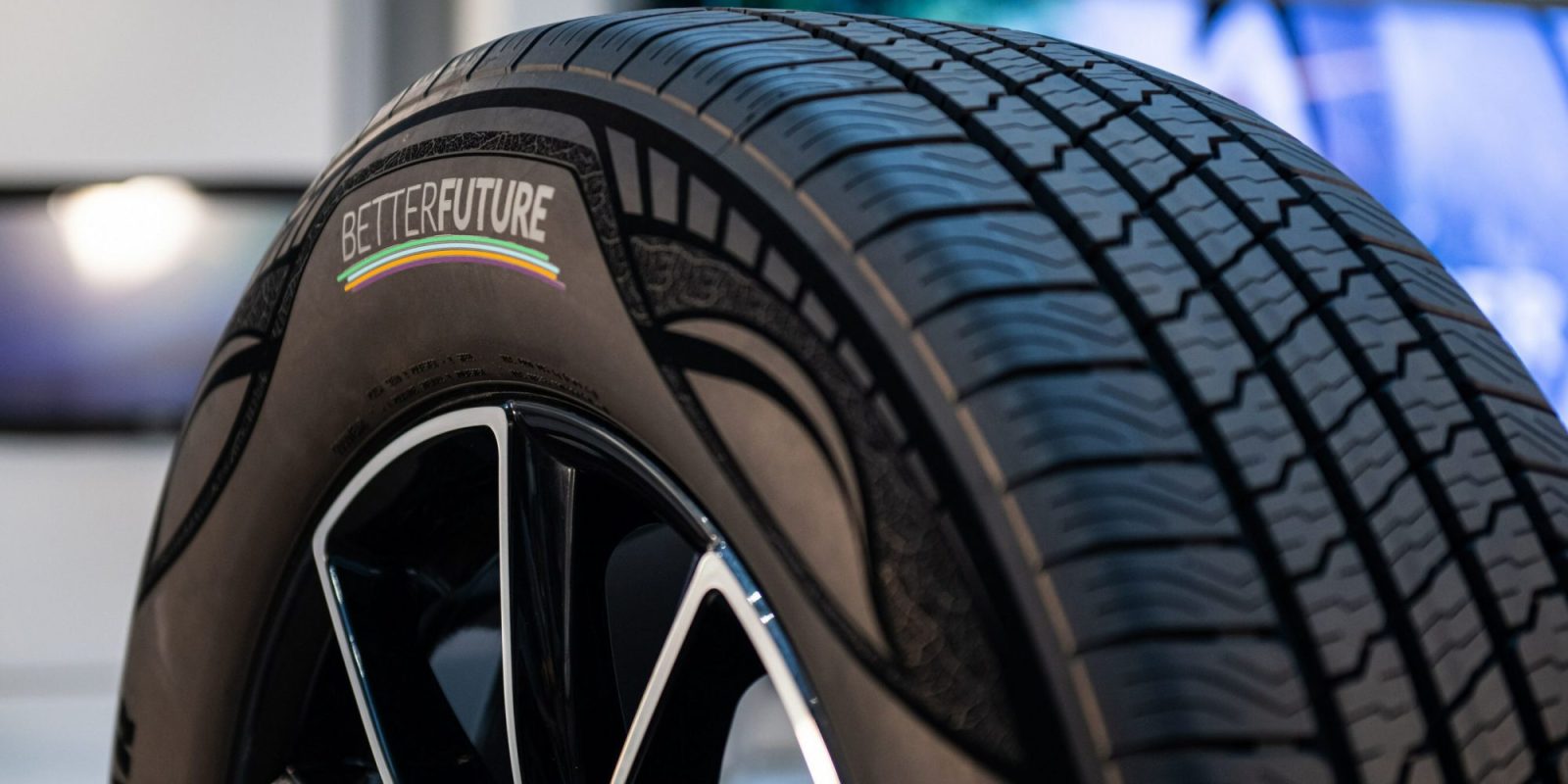
Goodyear has demonstrated a tire consisting almost entirely of what it claims are “sustainable materials,” with a mission to further increase that percentage to 100% by the end of the decade.
The new tire also has lower rolling resistance compared to a “reference tire.” Lower rolling resistance means less friction with the road, which makes a car more energy-efficient.
At last year’s CES show, Goodyear showed off a 70% sustainable tire, which included 13 “featured ingredients” across nine tire components. It wants to work with suppliers to bring that tire to market and start selling it to drivers in 2023. If you want to know when you can buy this 70% sustainable tire, you can sign up for updates on Goodyear’s website.
At this year’s CES, they’ve upped their game and are now demonstrating a 90% sustainable tire, with 17 ingredients across 12 components. The new tire has passed Goodyear’s internal testing and all applicable regulatory testing.
The ingredients include recycled materials and relatively novel uses of natural compounds.
Goodyear’s new tire uses plant-based oil and end-of-life tires for carbon, soybean oil to keep the rubber pliable in changing temperatures, silica from rice husk waste to improve grip and reduce fuel consumption, recycled polyester and steel cords for reinforced structure, and renewable pine tree resin for traction.
Goodyear defines a sustainable material as “a bio-based/renewable, recycled material or one that may be produced using or contributing to other sustainable practices for resource conservation and/or emissions reductions including mass-balance materials.”
The company is already using some sustainable materials in some of their tires, with soybean oil appearing in eight of their product lines.
But Goodyear isn’t stopping there: It wants to have the first fully sustainable tire by 2030:
We continue to make progress toward our goal of introducing the first 100% sustainable-material tire in the industry by 2030. The past year was a pivotal one toward achieving this goal. We researched new technologies, identified opportunities for further collaboration and utilized our team’s tenacity to not only demonstrate our capabilities to produce a 90% sustainable-material tire, but to also produce a tire with up to 70% sustainable-material content this year. Our team continues to showcase its innovation and commitment to building a better future.
Chris Helsel, senior vP of Global Operations and Chief Technology Officer, Goodyear
Electrek’s Take
Tires are perhaps an underappreciated area of innovation in the automotive space, and one which could have big benefits in terms of efficiency, air quality, and waste. Rolling resistance is the second most significant source of energy loss in a vehicle behind air drag, so tires can offer a lot of efficiency gains.
But as for materials, one of the (often disingenuous) arguments that many people bring up against electric cars is that “they still have tires and tires are made from oil, so you’re still using oil! HA!”
This is of course ridiculous, as the percentage of oil used for tires is dwarfed by the percentage that is burned in engines. But, as with most disingenuous propaganda, it did come from some tiny kernel of truth.
It is true that tires create a significant amount of waste, and that reducing the amount of waste they are responsible for is a good thing. So a push toward using more sustainable materials and recycling tire waste is an important step toward cleaning up the system, alongside the electrification of transportation and a move to more sustainable transport methods (public transport, bicycles, walkable cities, etc.).
Top comment by Douglas Cutler
Environmental micro plastic from tire dust is looking like a bigger problem than previously thought and has been implicated in declines of wild salmon, for example. One might assume tire dust from these tires would be far more biodegradable but the issue has not been directly addressed in the article.
What we’d like to see next is for Goodyear, and other tire companies, to see if there’s anything that can be done about particulate pollution. In the course of normal wear and tear (or when people do sick burnouts), tiny bits of tire get left on the road and kicked up into the air, and those tiny tire bits are a significant contributor to particulate air pollution, which creates smog and harms health, and can get into water pollution as well.
Car exhaust pollution has reduced significantly in recent years through regulation and as we begin the overall societal shift toward EVs, but so far, we haven’t seen much regulation around tire pollution (or brake dust pollution – another significant source, which EVs reduce by relying more on regenerative braking than friction brakes).
But as exhaust emissions reduce, regulators’ eyes may turn towards these other sources of particulate emissions, and if tire companies don’t want that smoke (pun intended), maybe they can get working on that problem ahead of time, too.
We do think that the definition of “sustainable material” here is perhaps a little broad, as while many of these materials are plant-based, some of them are still petroleum-related – like waste tires, recycled bottles, and methane. But efforts to “close the loop” (“increase circularity” in Goodyear’s parlance) will at least mean society won’t need to use new petroleum products and can continue recycling as much of what we have as possible, while continuing to push the limit on sustainable materials.
FTC: We use income earning auto affiliate links. More.



Comments